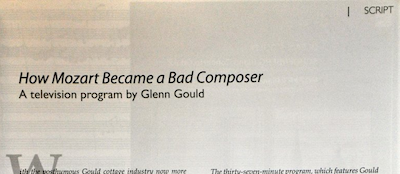
The illustration above is from The Kentucky Derby Is Decadent and Depraved, the article that is said to have marked the beginning of gonzo journalism. Hunter S. Thompson, the author of the piece, tells how it came to be:
THOMPSON: I’d gone down to Louisville on assignment for Warren Hinkle’s [magazine] Scanlan’s. A freak from England named Ralph Steadman was there—first time I met him—doing drawings for my story. The lead story. Most depressing days of my life. I’d lie in my tub at the Royalton. I thought I had failed completely as a journalist. I thought it was probably the end of my career. Steadman’s drawings were in place. All I could think of was the white space where my text was supposed to be. Finally, in desperation and embarrassment, I began to rip the pages out of my notebook and give them to a copyboy to take to a fax machine down the street. When I left I was a broken man, failed totally, and convinced I’d be exposed when the stuff came out. It was just a question of when the hammer would fall. I’d had my big chance and I had blown it.
INTERVIEWER: How did Scanlan’s utilize the notebook pages?
THOMPSON: Well, the article starts out with an organized lead about the arrival at the airport and meeting a guy I told about the Black Panthers coming in; and then it runs amok, disintegrates into flash cuts, a lot of dots.
INTERVIEWER: And the reaction?
THOMPSON: This wave of praise. This is wonderful . . . pure gonzo. I heard from friends—Tom Wolfe, Bill Kennedy.
INTERVIEWER: So what, in fact, was learned from that experience?
THOMPSON: I realized I was on to something
Food for thought.
The only book by Thompson I had attempted to read was Hell’s Angels, which I didn’t finish. A PDF version of The Kentucky Derby is here, if you are interested (found here).
On a plane trip a couple of months ago, I watched a documentary about Ralph Steadman, the cartoonist Thompson mentions above. The two are/were apparently very different characters—Thompson being the more spontaneous, crazy one—but had a fruitful partnership that spanned years. A remark from the film had stuck in my mind, looking for a transcript, I found this:
The basis of Ralph and Hunter’s friendship was that they saw kindred spirits in each other. [I think] Hunter realized that Ralph was crazier than him. Ralph was willing to go to extremes that Hunter was not willing to, and you’d think Hunter would be the one who was the, you know, more outrageous and reckless and the one who would go out on a limb on something. But Ralph was the one who’d actually go there. I’m not talking about physical safety. But I’m talking about sort of, you know, mental, moral, philosophical
The limbs Steadman was willing to go out on mentioned in the film included the Vietnam War and Watergate.
I got the image at the top from Steadman’s website. He is still active, apparently, and recently contributed to Ghosts of Gone Birds, a project “dedicated to breathing life back into the birds we have lost – so we don’t lose anymore”.

The trailer of the documentary is .

